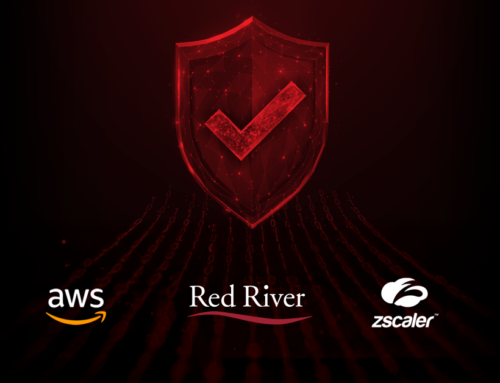
Building a Resilient Future: The Role of Zero Trust Architecture in Modern Network Security
In a world where cyber threats are evolving at an unprecedented pace, network security has become a cornerstone of organizational resilience. As businesses and governments adopt the National Institute of Standards and Technology (NIST) 800-207 standard for Zero Trust Architecture (ZTA), a proactive approach to securing networks is more critical than ever. This blog explores the essential components of modern network security and the advantages of leveraging segmentation within a Zero Trust framework.
The Shift to Identity-Based Security
Traditional network security models, which relied on IP-based access, are no longer sufficient in today’s dynamic threat landscape. Modern security hinges on identity-based access controls, which require users and devices to authenticate before gaining access. This approach enforces a “permit-by-exception” policy, where trust is established only after stringent validation, significantly reducing vulnerabilities.
The Power of Segmentation
Segmentation is a key strategy within Zero Trust Architecture, enabling organizations to create isolated network segments tailored to specific needs. This technique is divided into two levels:
- Macro-Segmentation: Dividing broad classes of devices or systems into distinct groups.
- Micro-Segmentation: Creating fine-grained subdivisions that restrict access to individual devices or applications.
By combining macro and micro-segmentation, organizations can control access more effectively and minimize the lateral movement of potential attackers within the network.
Strengthening Defenses in an Expanding Digital Perimeter
The rise of remote work, cloud computing and SaaS applications has expanded the traditional network perimeter. Segmentation acts as a critical defense mechanism, limiting the attack surface and containing potential threats. Organizations must adopt tools and strategies that seamlessly extend security controls to remote environments without compromising user experience.
Creating a Unified User Experience
Security should never come at the expense of user productivity. To ensure adoption, security tools must provide a seamless experience across various environments—whether employees are working from a campus, a remote office, or at home. Interoperable systems that deliver consistent performance are key to maintaining a balance between security and usability.
Access Policies: The Core of Network Security
Zero Trust security relies on robust access policies that dynamically assess and adapt based on several factors:
- Who: The identity of the user or service requesting access.
- What: The device’s security posture and associated risks.
- Where: The physical or network location of the access request.
- When: The timing and context of the access attempt.
- How: The method of connection, whether wired, wireless, or VPN.
This comprehensive approach ensures that access decisions are informed by real-time data, reinforcing the foundational principles of authentication, authorization and accounting (AAA).
The Benefits of Segmentation in Action
Implementing segmentation within a Zero Trust framework delivers tangible benefits:
- Enhanced Incident Response: By monitoring activity through AAA services and a centralized SIEM, organizations can quickly detect and quarantine compromised devices.
- Operational Efficiency: Automating network access controls reduces the administrative burden, allowing IT teams to focus on strategic initiatives.
- Shadow IT Mitigation: Enforcing authentication and authorization discourages the use of unauthorized devices, ensuring compliance with organizational policies.
- Disruption of Attacks: Limiting lateral movement through segmentation slows down attackers, buying critical time for detection and response.
Realizing the Potential of Zero Trust with Red River and Cisco
Red River, a trusted partner with over 25 years of expertise in Cisco solutions, is uniquely positioned to help organizations navigate their Zero Trust journey. From initial consultations to deployment and optimization, Red River’s lifecycle approach ensures that security solutions align with both organizational goals and regulatory requirements.
The Cisco Identity Services Engine (ISE) serves as a cornerstone of these efforts, providing advanced Network Access Control (NAC) capabilities and enabling micro-segmentation through Security Group Tags (SGTs). These tags facilitate seamless enforcement of identity-based policies across the network, enhancing security without compromising performance.
A Consultative Approach to Cybersecurity
Red River’s approach to cybersecurity includes:
- Consultation: Collaborating with clients to define security objectives and develop tailored reference architectures.
- Design: Identifying the right mix of technologies to meet organizational needs.
- Deployment: Implementing solutions with precision, from supervision to turnkey installations.
- Management: Offering 24/7 monitoring and support, along with tools like RedConnect for asset tracking and lifecycle management.
- Optimization: Continuously improving solutions to maximize return on investment and adapt to emerging challenges.
The Path Forward: A Resilient, Secure Future
Adopting a Zero Trust Architecture is not just a technical initiative—it’s a cultural shift that requires buy-in from leadership and alignment across all levels of an organization. With robust segmentation, identity-based controls, and the expertise of partners like Red River and Cisco, organizations can build a resilient security posture that meets the demands of today and tomorrow.
To learn more about how Red River and Cisco can transform your cybersecurity strategy, contact us at [email protected].
written by
Red River
We call ourselves a technology transformation company because we know how to harness the power of technology to change the way you do business and meet mission objectives. Our industry leading technical expertise, strategic partnerships and portfolio of services and solutions that span the entire lifecycle of technology have made us the partner of choice for clients in the commercial, federal and SLED markets interested in optimizing business processes and maximizing the value of their investments. Learn more about Red River.




